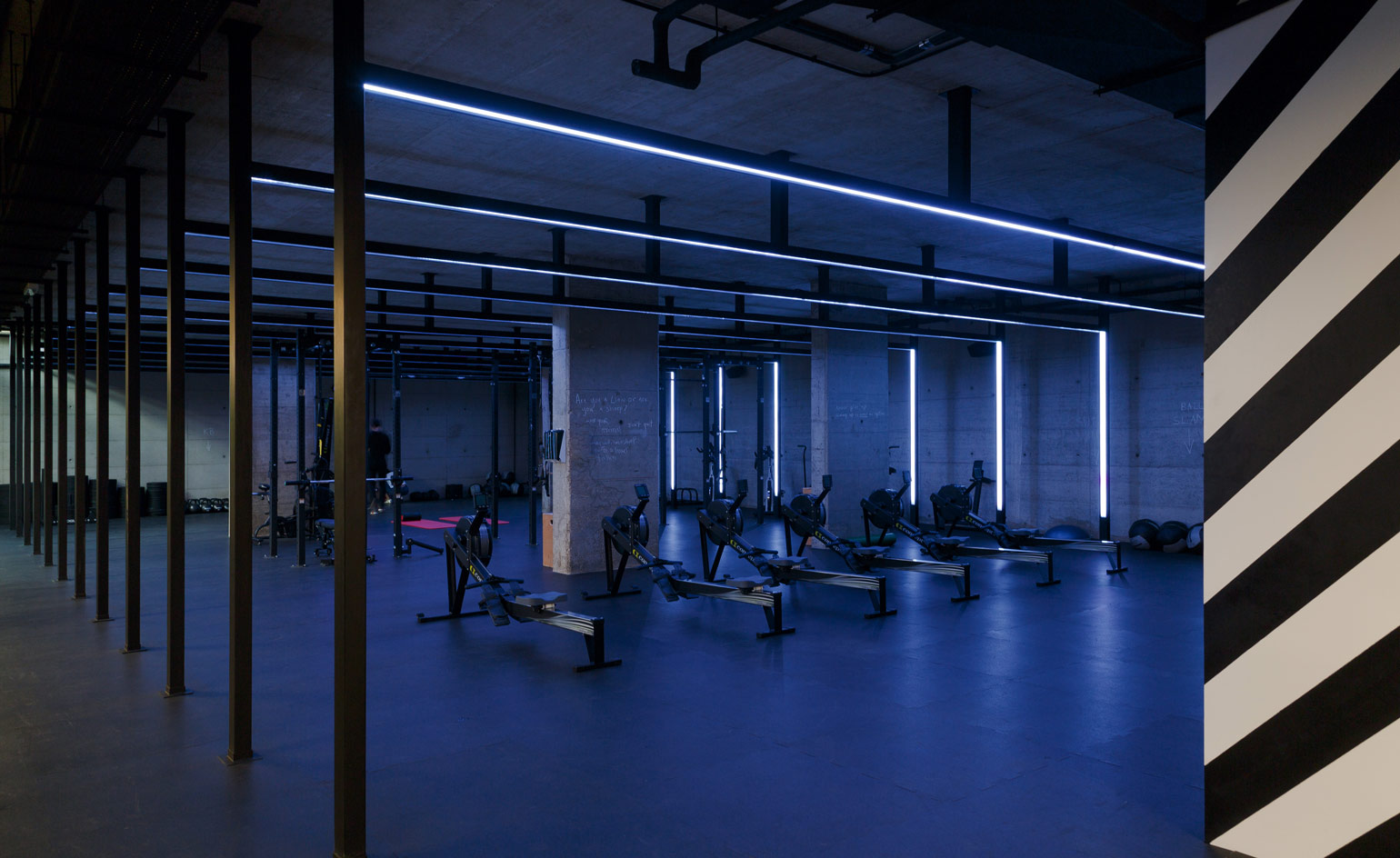Wallpaper* speaks to AdiZero Primeknit designer James Carnes

Could the AdiZero Primeknit change the way shoes are made? The latest performance running shoe from Adidas is made from one continuously, digitally knitted polymer yarn - of the kind used to make parts of some furniture - including all of the supportive elements found in a traditional shoe. No lining, reinforcement or glues are required to make it extremely lightweight, breathable and unexpectedly strong. The project, the teamwork of product design consultant Alexander Taylor and James Carnes, head of design for sports performance at Adidas, began in 2008. Four years on, Carnes, speaking below, believes the manufacturing process behind it could be revolutionary.
Was the R&D process a smooth one?
From the outset it was an interesting idea from an innovation point of view - exploring ways to contribute to the athlete’s experience but potentially also changing the way shoes are made altogether. We met with the knitting supplier in 2008 and initially their response to making a shoe was one of excitement - and then of daunted confusion. How could we tailor these machines and their software to work with the more 3D fit needs we had? And how could we take advantage of the properties of the available yarn to perform as all parts of a shoe usually perform? But by 2009 we were going through rounds and rounds of prototypes and it seemed like it would work.
Have you been at all surprised by the success of the project?
I have to say that of all the new concepts we reviewed at the beginning I wouldn’t have picked knitting as the one that would work. I trained in car design so was more familiar with the idea of maybe using one piece of carbon fibre, for example. But I’ve been designing sports performance footwear for 17 years and this is the most exciting project I’ve been involved with. We’ll be using knitting with lots more shoes by next year, not just performance products but even with Originals models like the Superstar. Whether knitted shoes will be around in the next 50 years I don’t know. But the automated system used to make them has huge potential - in terms of keeping manufacturing local, for example, or in terms of attaining new levels of sustainability. I think it really could be revolutionary.
It’s great to have a sports shoe made in western Europe again...
With the right machinery - and it’s not a big machine, kind of average room-sized - the shoes could be made anywhere. And the fact that these are made in Germany - and, of course, Adidas started out in Germany - makes it all very cool. It uses a minimal amount of manpower so labour costs aren’t an issue, even when they’re high, as they are in Germany. There’s no incentive to move production to China, for example. The implications of that are huge. It reminds me of footwear manufacturing in Italy, where a lot of it looks like it takes place in a house with a garage attached - but that small scale, local production has sustained the Italian footwear market for 100 years or more.
What have been the early reactions to the shoe?
The idea takes a little getting used to. Most people look at it and are attracted to the textile feel of it and say that it looks comfortable but assume it can’t be that durable. But the specification of the polymer yarn means that, in fact, it’s very durable. We could, for example, make football boots with this method - the yarn melts and forms a kind of toe-cap. There’s more built into the knit than at first seems the case. Then you put them on and you think ‘wow, these are soft, but I’m not sure I could run 20km in them’. But the athletes who tested them have been really surprised. Like any new technology, there’s an adoptive curve: some people jump on it, others have reservations and come to it later. I’m a runner and I think they’re great. Have they improved my running? Well let’s say that the way I’ve been running lately, I’m not sure anything would do that.

The result offers considerable advances: the shoes are well-ventilated, super-light and comfy with a built-in heel counter

They're more sustainable, being easier to make and less wasteful (without the need for environmentally questionable glue to bind together 15 separate components)

Above all, they provide a second-skin fit, retaining the shape of each foot when taken off
Wallpaper* Newsletter
Receive our daily digest of inspiration, escapism and design stories from around the world direct to your inbox.
Josh Sims is a journalist contributing to the likes of The Times, Esquire and the BBC. He's the author of many books on style, including Retro Watches (Thames & Hudson).
-
 Naoto Fukasawa sparks children’s imaginations with play sculptures
Naoto Fukasawa sparks children’s imaginations with play sculpturesThe Japanese designer creates an intuitive series of bold play sculptures, designed to spark children’s desire to play without thinking
By Danielle Demetriou
-
 Japan in Milan! See the highlights of Japanese design at Milan Design Week 2025
Japan in Milan! See the highlights of Japanese design at Milan Design Week 2025At Milan Design Week 2025 Japanese craftsmanship was a front runner with an array of projects in the spotlight. Here are some of our highlights
By Danielle Demetriou
-
 Tour the best contemporary tea houses around the world
Tour the best contemporary tea houses around the worldCelebrate the world’s most unique tea houses, from Melbourne to Stockholm, with a new book by Wallpaper’s Léa Teuscher
By Léa Teuscher
-
 The best gyms around the world for design buffs in 2018
The best gyms around the world for design buffs in 2018By Mary Cleary
-
 Skate park design goes to the British seaside with Guy Hollaway’s F51
Skate park design goes to the British seaside with Guy Hollaway’s F51F51 is Folkestone's brand new, dedicated, multistorey skate park, courtesy of the Roger De Haan Charitable Trust and Hollaway Studio
By Ellie Stathaki
-
 Community centre architecture redefined: Holborn House by 6a and Caragh Thuring opens
Community centre architecture redefined: Holborn House by 6a and Caragh Thuring opensHolborn House by 6a Architects and Caragh Thuring opens for the Holborn Community Association in London, bridging art and community architecture with people at its heart
By Ellie Stathaki
-
 Pink concrete skatepark is a striking urban landmark in the Chihuahuan Desert
Pink concrete skatepark is a striking urban landmark in the Chihuahuan DesertA team of architects, landscape designers, sociologists and urban planners came together to create La Duna, a fine example of skatepark architecture on the northern border of Mexico
By Ellie Stathaki
-
 Last chance to play: Yinka Ilori's colourful basketball court in Canary Wharf is a slam dunk
Last chance to play: Yinka Ilori's colourful basketball court in Canary Wharf is a slam dunkArtist and designer Yinka Ilori applied his signature colourful geometries to his design for this new public basketball court in Canary Wharf, London
By Rosa Bertoli
-
 Building muscle: London architecture walks and runs
Building muscle: London architecture walks and runsTry these London architecture walks and runs for some physical and intellectual edification
By Simon Mills
-
 Janne Tuunanen captures modernist architecture of renovated Helsinki Olympic Stadium
Janne Tuunanen captures modernist architecture of renovated Helsinki Olympic StadiumPhotographer Janne Tuunanen captures the sharp modernist architecture of the recently renovated Helsinki Olympic Stadium in Finland in his latest series
By Ellie Stathaki
-
 Yinka Ilori’s colourful skatepark in France is a pillar of the community
Yinka Ilori’s colourful skatepark in France is a pillar of the communitySport, street art and community merge in Yinka Ilori’s skatepark in Roubaix, project that is part of Lille’s World Capital of Design 2020
By Rosa Bertoli